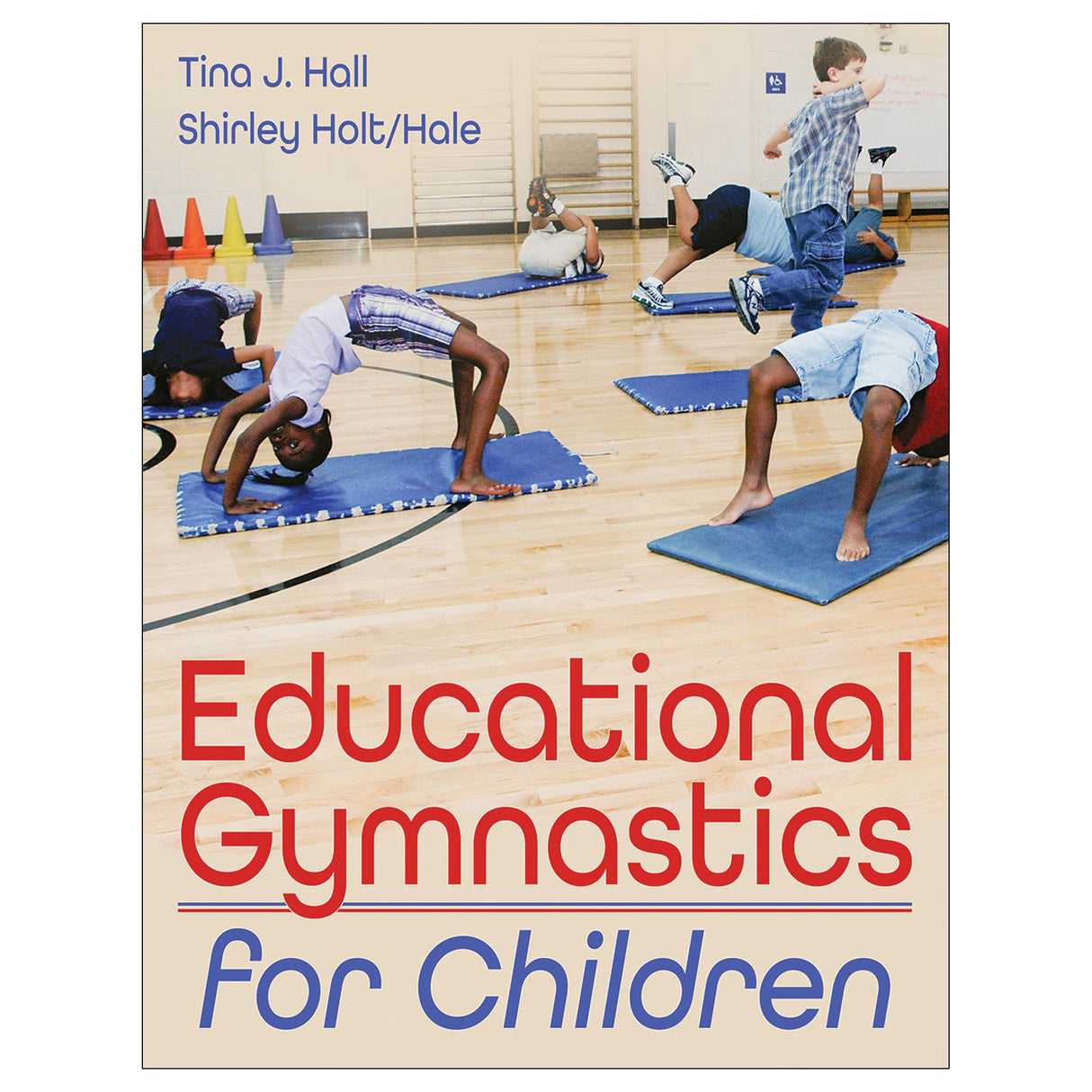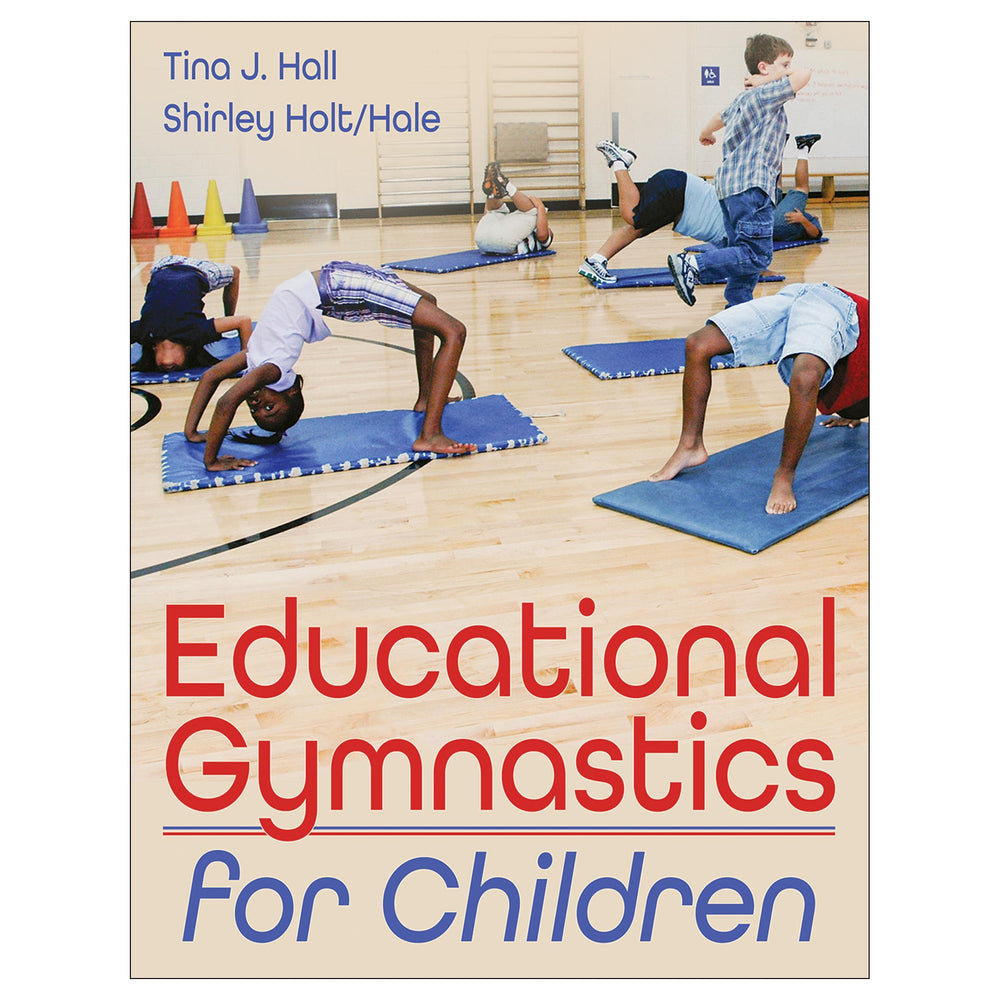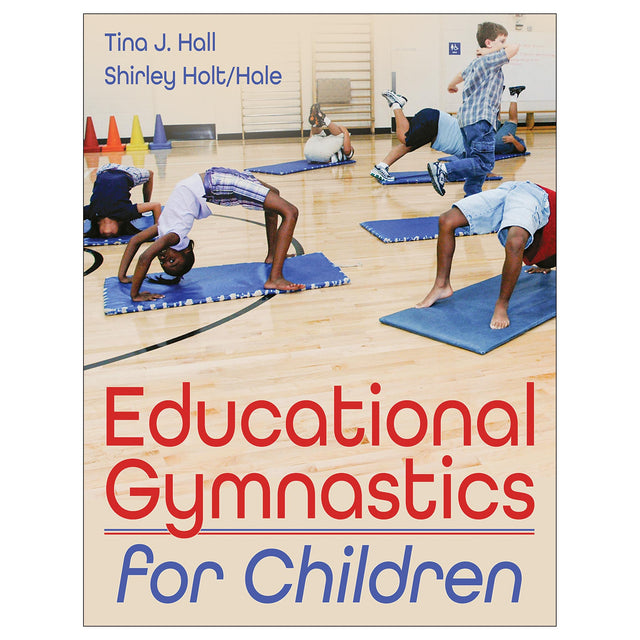Educational Gymnastics for Children
Author: Tina J. Hall, Shirley Holt/Hale
$96.95 CAD
Educational Gymnastics for Children takes a child-centered approach to offering highly applied and safe learning experiences as it provides readers with the theoretical foundation and practical application of educational gymnastics for all elementary students. Written by two physical education professionals who have years of experience providing these learning experiences to children in elementary physical education programs, the text offers the following:
- Gymnastics learning experiences for elementary physical education, most requiring no gymnastics equipment
- Detailed safety measures for all learning experiences to ensure a safe environment
- Assessment strategies to enhance student learning
- A child-centered approach to engage all students in a noncompetitive environment that encourages variety in student response and success for all students, thus fostering social-emotional learning and self-worth
Learning Experiences
The learning experiences in the text are presented as a progression based on the development of children, both physically and cognitively. Each series of learning experiences is preceded by a cognitive focus, a skill focus, criteria for quality, and information on safety, equipment, and organization to maximize participation and learning. Teaching tips are offered throughout to help teachers develop lesson plans to fit the needs of their students.
Organization
Educational Gymnastics for Children is organized into three parts. Part I presents the theoretical background for educational gymnastics, comparing it to traditional gymnastics. This part explains how educational gymnastics meets children at their skill level and expands their skills within their level of competence. The components of balance are explored, and these chapters explain how to create a learning environment that is student centered, success oriented, and safe.
Part II presents learning experiences that will help children develop a functional understanding of the components of educational gymnastics. This part explores the skills of balance, weight transfer, and travel. It offers individual and partner sequences, both with and without equipment.
Part III addresses two vital questions for teachers: What is your goal for the children you teach? How do you know they have accomplished that goal? Standards and assessments are examined in this part.
Lifelong Skills
Educational Gymnastics for Children provides teachers with the content and teaching strategies they need to provide students a quality program of educational gymnastics—and to acquire some lifelong skills along the way.
Audience
Undergraduate text for physical education teacher education courses in teaching educational gymnastics. Supplemental text for elementary education courses. Teacher resource for elementary physical educators and elementary classroom teachers.Chapter 1. Educational Gymnastics
Child-Centered Gymnastics
Laban’s Movement Analysis Framework
Foundation of Games, Sports, and Dance
Summary
Chapter 2. Balance as the Foundation for Movement
Balance in Gymnastics
Balance in Games and Sports
Balance in Dance
Balance as a Lifetime Skill
Summary
Chapter 3. Establishing the Teaching and Learning Environment for Educational Gymnastics
Child-Centered Approach
Self-Responsibility and Student Success
Instruction Using a Child-Centered Approach
Safe Learning Environments
Summary
Part II. Learning Experiences in Educational Gymnastics
Chapter 4. Movement Analysis Framework
Teaching the Concepts and Prerequisites
Body Awareness
Space Awareness
Effort
Relationships
Summary
Appendix A: Shapes
Appendix B: Jumping and Landing
Chapter 5. The Foundational Skills of Balance
Balance Concepts
Balancing Using Body Shapes and Levels
Summary
Appendix: Counterbalance Challenges
Chapter 6. Balance and Weight Transfer
Weight Transfer Rolling
Inverted Balances
Weight Transference Between Balances
Weight Transference With Levels and Shapes
Weight Transference Using In-Flight Actions
Educational Gymnastics Sequences
Summary
Appendix: Sequence Assignment
Chapter 7. Educational Gymnastics With Equipment
Establishing a Safe Environment for Gymnastics Equipment
Safe Balances and Travel on Equipment
Balances and Weight Transfer on Equipment
Gymnastics Equipment Mounts and Dismounts
Sequences on Equipment
Summary
Appendix A: Traditional Gymnastics Balance Beam
Appendix B: Final Gymnastics Sequence Assignment
Part III. Reflection and Assessment in Educational Gymnastics
Chapter 8. Alignment of Goals, Standards, and Assessments in Educational Gymnastics
Physical Education Goals
National Standards
Assessment
Summary
Epilogue





